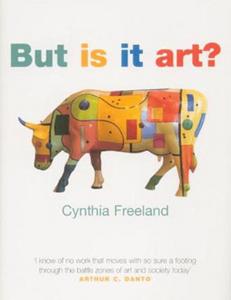

Nothing engages me more than a stimulating discussion about politics or ar. This fall, our region has been enriched by the latter, stimulated by the Art in Public Placesproject in Bristol, Tennessee/Virginia. The dialogue has been aided and abetted, some might say provoked, by the "But is it art?" headline in the Bristol Herald Courier news coverage of the public art opening. I commend the paper for its attention to this worthy project by way of news, editorial comment, and letters to the editor.
Under the auspices of the Arts Alliance Mountain Empire, many volunteers have worked more than two years to bring public art to downtown Bristol. With this project, Bristol joins other small towns such as Boone, North Carolina and Grand Junction, Colorado, that have turned to art in public places as a way to enhance the community.
I am happy to have been a member of the AiPP Committee, and I confess to having a positive bias about Bristol's AiPP project. It may be foolish of me to add my voice to the dialogue, but here goes.
My take on the discussion of what is art has been informed by several conversations of late with friends outside my art circles. The consensus generally is that art is about beauty and emotions. The artists most readily cited as favorites are categorized as Impressionists or Post-Impressionists: Monet or Renoir, Cassatt or Degas, and Van Gogh.
Ah, what a difference little more than a century makes. When those artists emerged in Paris during the latter half of the nineteenth century, they were criticized, rejected by the official arts academy, and generally considered to be undisciplined and lacking in talent. Today, I believe it is not hyperbole to say the Impressionists are the best known and beloved in all of art history. So, when one is quick to proclaim something not art, I immediately think of the works by this revolutionary force in art.
Two recent books have informed my theoretical understanding of art, especially contemporary art. The first is a small book: "But is it art?: An Introduction to Art Theory" by Cynthia Freeland (Oxford University Press, 2001) and the other is "Reading Pictures: A History of Love and Hate" by Alberto Manguel (Random House, 2000). I highly recommend them to anyone who wishes to grapple with the question of what constitutes contemporary art.
"But Is It Art?"
A university professor of philosophy, Freeland offers a compilation of the varied definitions of art in her thought-provoking exploration. Art does one or more of the following:
"Reading Pictures"
The second book I referenced, Reading Pictures, has a misleading title because the author maintains that to understand not just images but also "sculptures, installations and video screens," one must learn "to read" them by learning "the story of how the work came into being, the story of its maker....? (page 201). Manguel encourages visual literacy as a tool for understanding the history of art and our capacity for love and hate. Another way of stating Manguel's theory is the axiom: In art, you know what you like because you like what you know.
Viewers of the public art on display in Bristol can learn so much just by reading the title of each sculpture and the artists' statements in the catalogue, available at venues along State Street in the historic downtown district.
In line with Manguel's challenge "to read" art, two quotes come to my mind:
Won't you join me? We have so much to learn as we engage in "reading" the art in public places in Bristol. After you have finished "reading" the six sculptures, you have the opportunity to vote on-line for your favorite piece.